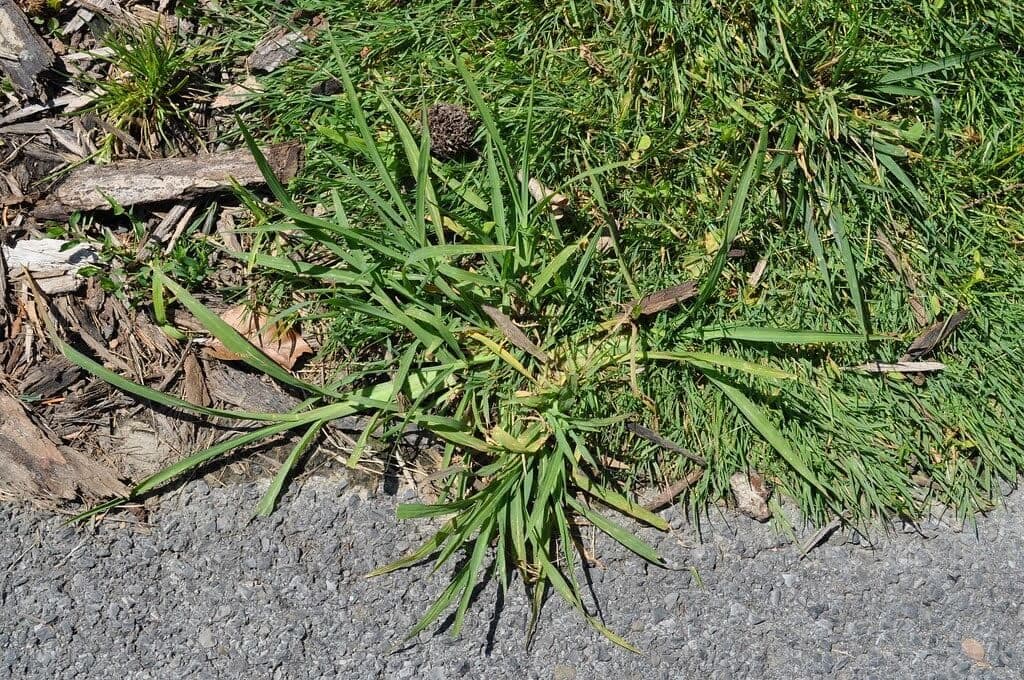You want to apply pre-emergent herbicide to your lawn. Maybe you’ve done it before and maybe not. Either way, you’ve got questions. And, you’re in luck because we have answers. Use this guide to learn the right way to apply pre-emergent to your lawn and get rid of that pesky crabgrass.
What is Pre-Emergent?
Pre-emergent herbicide is a lawn care product designed to prevent undesired weeds. A pre-emergent chemical solution may contain one or more of the following active ingredients:
- Benfluralin – a dinitroaniline herbicide developed to inhibit root and shoot development to prevent weed growth in lawns, crops, and ornamentals.
- Dithiopyr – a mitotic herbicide developed to inhibit weed root growth in lawns, vines, and ornamentals.
- Isoxaben – a benzamide and isoxazole herbicide developed to control broadleaf weeds in vineyards and nut tree orchards.
- Oxadiazon – a dinitroaniline herbicide developed to control the growth of broadleaves, grasses, sedge, bush vines, and bramble.
- Pendimethalin – a dinitroaniline herbicide developed to inhibit cell-division and cell elongation to destroy or prevent weed growth in crops, lawns, and ornamentals.
- Prodiamine – a dinitroaniline herbicide developed to control weeds in crops such as soybeans, alfalfa, cotton, and ornamentals.
- Siduron – a dinitroaniline herbicide developed to prevent weeds when seeding or overseeding a lawn.
- Trifluralin – a dinitroaniline herbicide developed to control a variety of annual grass and broadleaf weeds in tree fruit, nut, vegetable, and grain crops.
So, precisely what does pre-emergent do? In a nutshell, it prevents the growth of undesired plant life before it sprouts.
How Does Pre-Emergent Work?
Depending on the formula used, pre-emergent works in one or more of three ways:
- Inhibits plant root growth
- Inhibits seed cell division
- Inhibits specific enzymes essential to the growth of certain plants
As you can see from the previous list, most pre-emergents have dinitroaniline herbicides. And, these chemicals do not prevent seed germination. Instead, they primarily inhibit the growth of roots. So, younger plants are more susceptible to damage.
Using pre-emergent on a newly-seeded lawn, in most cases, is not a wise idea. Many pre-emergents can potentially kill newly-sprouted grasses.
Does pre-emergent kill weeds?
Pre-emergent is not meant to destroy existing weeds or their seeds. The herbicides will kill weeds as they begin to sprout from their seeds. However, seeds that remain dormant will not be affected by pre-emergent application.
Does pre-emergent kill crabgrass?
As with weeds, yes, pre-emergent can kill crabgrass as new seeds germinate. Yet, it is not able to destroy established crabgrass. Instead, it is best to manually remove mature crabgrass from your lawn.

[Crabgrass seedlings look like miniature corn stalks. Mature crabgrass has wide leafblades: 1/4″ wide or more. .]
Are Pre-Emergents Safe?
Pre-emergents must be used as advised. According to the FTC, “United States law requires that herbicides and fungicides undergo a rigorous registration process with the U.S. Environmental Protection Agency (“EPA”) before they may be used or sold in this country.” So, as long as you follow the instructions, pre-emergents sold in the US are considered safe.
When to Apply Pre-Emergent Herbicide?
It’s important to know when to spray pre-emergent or apply granular herbicides. Using these chemicals in the wrong temperatures can render them ineffective.
Ideal Times of Year for Application:
Now, what is the right month to apply pre-emergent? While there are ideal application times, pre-emergents can be applied throughout the year. Fall application should take place in late summer or early autumn. Spring application should be early in the season. The key is to apply the product before unwanted seeds germinate.
Best Temperatures for Application:
Next, what temperature should it be to apply pre-emergent? Some landscape specialists claim that the temperature should be 60 or 70 degrees (F). But, a study from The University of Missouri College of Agriculture, Food, & Natural Resources found that the most effective time to apply pre-emergent herbicides was when the ground has been 55 degrees (F) for 5 days in a row. So, watch the weather and plan your application in advance.
How Do You Use Pre-Emergent? (Step-by-Step)
Note: For proper application, you want to follow the manufacturer’s instructions. But, as a rule, here’s how to properly apply both granular and liquid pre-emergent.
How to Use Granular Pre-Emergent Herbicide:
- Pour granular pre-emergent herbicide into a spreader.
- Apply the grains uniformly, at a rate of 1.5 to 6 pounds per square foot per year, across the area of lawn to be treated.
- Follow-up with at least ½” of water via sprinkler irrigation or rainfall within 14 days.
How to Use Liquid Pre-Emergent Herbicide:
- Pour liquid pre-emergent into a sprayer.
- Spray evenly, at a rate of 2-6 quarts per acre per (no more than 12 quarts per acre per year) across the area of lawn to be treated.
- Follow-up with at least ½” of water via sprinkler irrigation or rainfall.
What Are the Most Common Mistakes People Make?
Here’s what you want to avoid when you apply pre-emergent herbicide to your lawn.
- Applying to newly-overseeded turf. You should wait at least 60 days after overseeding or until after the second mow before applying pre-emergent.
- Laying newly-set sod over pre-emergent. It is recommended to wait until at least a year after applying pre-emergent herbicide to lay sod.
- Applying to damaged turf. Do not apply to turf that has been affected by drought, low fertility, or pest damage.
- Aerating turf too soon after application. While treating your lawn with pre-emergent, do not aerate or thatch.
- Applying to putting-greens. Golf courses find that pre-emergent laid on frequently-used putting greens is ineffective.
- Using an irrigation system to apply. Running herbicides through your irrigation system can be harmful to livestock and other living organisms that are crucial to a healthy ecosystem.
- Not watering after application. Water is required after pre-emergent herbicide application to move the product below the ground’s surface to the area of seed germination.
- Using pre-emergent and fertilizer at the same time. The amount of water needed to fertilize a lawn will move pre-emergent too far below the ground’s surface and render it ineffective.
- Using the wrong type of chemical for your grass species. Most herbicides are specifically formulated for certain species of turf and weeds.
Final Thoughts
Do you need help with your annual or seasonal yard maintenance including weed control services? Check out our landscaping services and give us a call today!
